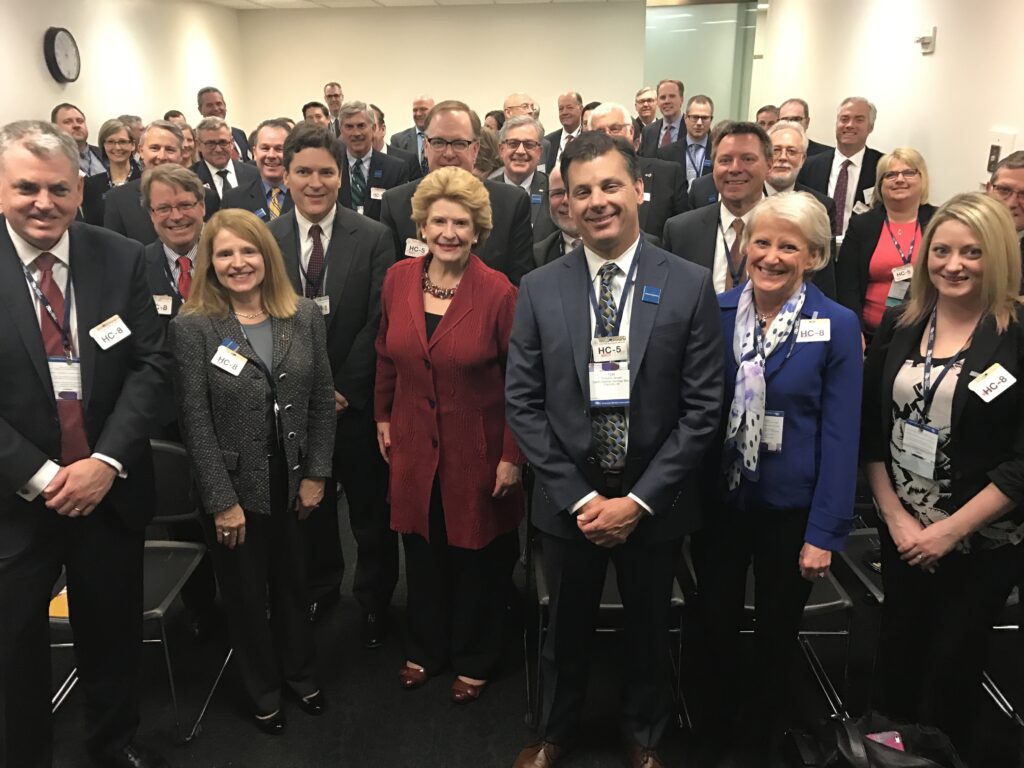You know that warm, fuzzy feeling you get when your 401(k) balance goes up? Like, yes, I’m actually adulting correctly. But here’s the sneaky part: while you’re out here trying to build your future dream life (houseplants, a paid-off car, maybe even a pool?), your 401(k) might be quietly bleeding money thanks to hidden fees that feel more scammy than supportive. And unless you’re the type who reads every footnote in a 72-page plan disclosure (lol, same), you probably have no idea they’re even there.
Think of these fees like subscription charges for stuff you didn’t sign up for—except they’re siphoning off compound growth from your future self. Some are legit for services you might actually use, but many? Just fluff for middlemen, maintenance, or mystery charges wrapped in jargon. And because they’re usually tiny percentages, they fly under the radar while draining tens of thousands from your nest egg over time. Let’s pull the curtain back on the 13 sneakiest 401(k) fees that might be sabotaging your retirement goals right now—and what you can do to stop them.
1. Plan Administration Fees

This covers everything from printing statements and filing government forms to managing compliance testing—basically, the behind-the-scenes paperwork circus. You can be charged a flat dollar amount or, more sneakily, an asset-based fee that rises as your account grows. If your employer doesn’t cover it, you foot the bill, and it’s often buried alongside recordkeeping charges under “service” or “administration” in your disclosure. The frustrating part? You rarely get a line-by-line breakdown, so you’re left guessing which tasks justify the cost. What feels like a nominal $20 annual fee can climb to $100 or more if your plan offers fancy bells and whistles, like Roth-in-plan conversions.
As Bloomberg has reported, administrative charges alone can tack on an extra 0.3% of assets annually. Over decades, that can translate into thousands of dollars lost—money you could’ve used for avocado toast, or you know, actual retirement. Worse, some providers bundle these with advisory services you never asked for, so you pay for advice you don’t get to use. To fight back, ask for a detailed fee schedule and compare it against independent administrators. If you find a more transparent—and cheaper—option, press your company to switch. Sometimes all it takes is showing HR the numbers.
2. Recordkeeping Fees

These are the charges your plan administrator slaps on each year just for keeping tabs on your account—think of it like paying someone to alphabetize your sock drawer. They’re often quoted as a flat per-participant fee but can also be an asset-based percentage buried in the plan’s overall expense ratio. Even if it seems small—say $30–$60 per year—over a 40-year career, that adds up to hundreds of dollars siphoned from your balance. What’s worse, many employers pay these fees out of your contributions without giving you the option to shop for a cheaper provider. Investopedia notes that these fees can run from 0.1% to 0.5% of assets annually, quietly chipping away at your compound returns.
And good luck finding the exact amount: it’s usually tucked in a 100-page disclosure document that arrives once a year, right when your eyeballs are crossing from boredom. If you’re in a plan with thousands of participants, the company might negotiate a lower per-person rate, but smaller outfits get stuck with sticker-shock pricing. And even that “negotiated” rate often gets passed on to you through a slightly higher expense ratio on your funds. To spot it, look for a line item called “recordkeeping” or “administration” on your annual fee disclosure. Warning: you might need a magnifying glass or a really good poker face to read it. If it seems outrageous, consider asking HR whether a different vendor could handle your plan for less
3. Investment Management Fees

Every mutual fund or ETF in your 401(k) comes with a management fee—the price tag for pros running the show. These are usually baked into the fund’s expense ratio, which you’ll see on your statements as “total annual fund operating expenses.” Even index funds, once thought to be virtually free, carry tiny fees (often around 0.02%–0.10%). Active funds can charge north of 1%, and sometimes much more if they have a hot manager. The catch? You pay these fees whether the fund outperforms or not.
Per American Investment Services, Inc.., fees over 1% can erode as much as 30% of a retiree’s nest egg over a lifetime. Over a 30-year horizon, a 1% expense ratio versus a 0.1% ratio can shave off tens of thousands of dollars from your ending balance. And if you opt for a target-date fund—those autopilot portfolios that adjust risk as you age—expect fees in the 0.5%–1.0% range, often without a clear breakdown of underlying fund costs. Want to know exactly what you’re paying? Hunt for the “expense ratio” in each fund’s prospectus and multiply it by your balance. Then ask yourself: is that management style worth the price?
4. 12b-1 Fees

This is a fancy name for marketing and distribution charges that mutual funds sneak into some share classes. You’ll see them labeled as 12b-1 fees—capped by regulation at 1% per year—but often hovering around 0.25%–0.75%. They pay for things like broker commissions and advertising your fund on slick websites. But here’s the rub: you’re footing the bill even if no one ever shows you a brochure. These fees are deducted directly from fund assets, so you never see an itemized charge—just a slightly lower return. And if you roll over to an IRA, you might unknowingly carry these fees over unless you choose a different share class.
According to the Employee Fiduciary, many investors overlook these fees because they’re buried in prospectuses. Over 20 years, a 0.5% 12b-1 fee could whittle away almost 10% of your gains. To dodge them, stick to no-load share classes or funds that explicitly advertise zero 12b-1 fees. Your plan’s lineup might include multiple classes of the same fund—double-check the letter after the fund name (A, B, C, etc.) to find the cheapest option.
5. Sales Loads

If your plan offers retail-share mutual funds (often labeled as class A, B, or C), you may be paying front-end or back-end loads—commissions that reward brokers, not your portfolio. Front-end loads take 1%–5% off the top when you buy; back-end loads (or “contingent deferred sales charges”) hit you if you sell too soon. Even if your company match goes into a no-load fund, your voluntary deferrals might end up in a load-bearing share class. Loads are supposed to pay for “services,” but in reality they mostly grease broker commissions.
As SmartAsset highlighted, loads can tack on an extra 2%–4% cost that many savers don’t even realize they’re paying. Over years, those cuts can leave you with significantly less capital compounding in your account. To avoid them, opt for no-load institutional or admiral share classes—most large plans offer at least one clean share. If you can’t find one, talk to HR about swapping to cheaper share classes.
6. Wrap Fees

Often applied to variable annuity options within plans, wrap fees bundle administrative, guarantee, and insurance costs into one all-you-can-eat charge. They can run 1%–3% annually, with the promise of death benefits or income guarantees. But those benefits rarely justify the high cost for most savers. Because wrap fees are subtracted from your return before you even see it, you might assume your fund simply underperformed—when really you’re getting eaten alive by fees.
To spot them, check for terms like “mortality and expense risk charge,” “administration charge,” or “sub-TA fees.” If your plan’s lineup is heavy on annuity-style options, do the math: would you be better off in a low-cost T-fund or an index fund plus a separate guaranteed income product?
7. Advisory Fees

Some plans automatically enroll you in managed accounts or advisory services, charging a percentage—often 0.25%–0.75%—for help picking funds. But if you’re a DIY investor who ignores the advice, you still pay. These fees, sometimes called “wrap advisory” or “model portfolio” fees, are deducted from your balance regularly. Over time, paying for advice you don’t use can be a stealth wealth killer. If you’re comfortable managing your own mix, ask to opt out—or at least ensure the advice is actionable. Check your statement for line items like “investment advisory” or “model portfolio” fees.
Here’s the kicker: you’re essentially renting someone else’s brainpower whether you tap into it or not. That means every quarter, even if you’ve deleted the notification emails and never logged into the portal, your balance shrinks a little bit more. To fight back, request a fee waiver—many plans let you drop the advisory program if you can prove you’ve done your homework. Or, if you like the idea of guidance but hate the price tag, consider a robo-advisor outside your 401(k) that charges a flat fee under 0.25%. Either way, make sure the value you get aligns with what you’re paying; otherwise, you’re throwing money at a service you didn’t really subscribe to in the first place.
8. Transaction Fees

Every time you buy or sell certain mutual funds or request a distribution, you might incur a transaction fee—commonly $10–$95 per trade. These are technically “individual service fees” and often appear under headings like “loan processing” or “wire transfer” on your disclosure. If you frequently rebalance or take hardship withdrawals, these charges can add up. To minimize, use the no-transaction-fee (NTF) fund lineup your plan offers or consolidate trades into less frequent, larger rebalances.
But what if your plan’s NTF options are limited or underperforming? You can often avoid individual trade fees by batching your trades: pick a quarterly or semiannual rebalancing schedule instead of tweaking allocations monthly. And if your platform offers a self-directed brokerage window, shift your active trading there—those accounts usually have commission-free ETFs and stocks. Finally, set up automatic rebalancing where possible so you’re not manually buying and selling every time your target allocation drifts, saving you the per-trade surcharge and the mental energy.
9. Loan Origination Fees

Borrowing from your 401(k) isn’t free: most plans charge a loan setup fee (up to $100) and an annual maintenance fee ($25–$50). Plus, you pay yourself back with after-tax dollars—and if you leave your job unexpectedly, the remaining balance becomes taxable. Those fees aren’t outrageous one-off, but they’re another hit to your balance—and a sign you shouldn’t treat your retirement as an emergency piggy bank.
On top of that, the “interest” you pay yourself is also taxed twice—once when you earn it and again when you withdraw it in retirement. That sneaky double-tax drag can wipe out any perceived benefit of borrowing against your own account. Instead, consider a low-interest personal loan or a home-equity line of credit if you really need cash. If you must tap your 401(k), borrow only what you need, repay it aggressively, and factor the fees into your repayment plan so you’re not caught off guard by the extra costs.
10. Hardship Distribution Fees

Need cash for medical bills or tuition? If your plan allows hardship withdrawals, expect a distribution fee—often $75–$125 per event—on top of taxes and penalties. If you request more than once, each distribution tacks on another flat fee. Better to explore less costly options before tapping into your 401(k).
Plus, hardship withdrawals permanently shrink your compounding principal; once you remove the money, you can’t put it back without new contributions. That lost growth could be worth hundreds of thousands by the time you retire. Instead, build a separate emergency fund or negotiate payment plans with service providers—those options cost you far less in the long run. And if you do go the hardship route, shop around: some plan providers will waive the fee once if it’s a genuine hardship, but you have to ask.
11. Termination/Distribution Fees

When you leave an employer, rolling over or distributing your account can incur fees: paper check processing ($25–$100), rollover processing, or even forced cash-out charges if your balance is below a threshold. These exit fees can dissuade you from consolidating to a lower-cost IRA. Always ask for fee waivers or negotiate them down—plan providers often drop them for larger balances.
To sidestep high exit fees, opt for a direct trustee-to-trustee rollover instead of receiving a check. That way, you avoid paper-processing surcharges and reduce the risk of missing a deposit deadline (and triggering taxes). If your balance is small, consider leaving it in place only if the ongoing fees are lower than the exit charge—otherwise, consolidate to an IRA with transparent pricing. And before you jump ship, call your provider’s customer service—many will happily waive the distribution fee if you threaten to move a six-figure balance.
12. Custodial Fees

Some 401(k) custodians charge asset-based fees (0.05%–0.25%) simply for holding your investments, separate from recordkeeping or management fees. They often hide under “custodian” or “trustee” in your disclosures. If you spot this, compare alternative custodians—especially if you have a self-directed brokerage window in your plan.
Here’s a pro tip: if your plan offers a brokerage link, you can often move a chunk of your cash into that window and then select a custodian-backed ETF or mutual fund outside the default “trustee” lineup. That shift can eliminate the custodial drag while keeping money inside the tax-advantaged wrapper. Just be sure to read the brokerage window’s own fee schedule—sometimes you trade commission-free, but other times you take on flat monthly platform fees that could offset your savings.
13. Revenue Sharing Fees

Mutual fund companies sometimes pay a slice of their internal fees (revenue sharing) back to plan service providers as kickbacks—12b-1 and sub-transfer agent fees being chief examples. That revenue share gets tacked onto your fund’s expense ratio, so you’re effectively paying for someone else’s profit margin. Check your disclosure for “revenue sharing” or “R-share” line items, and if they seem steep, push for lower-cost share classes.
If you uncover hefty revenue-sharing arrangements, bring it up at your next plan committee meeting—or simply file a fee-disclosure request under ERISA regulations to get the hard numbers. You can also vote with your dollars by shifting to share classes that don’t pay out revenue—often labeled “Institutional” or “Retirement.” And if your employer seems slow to act, remind them that reducing revenue-sharing fees not only boosts participant balances but also demonstrates fiduciary diligence (and who doesn’t love ticking that compliance box?).
This article is for informational purposes only and should not be construed as financial advice. Consult a financial professional before making investment or other financial decisions. The author and publisher make no warranties of any kind.









